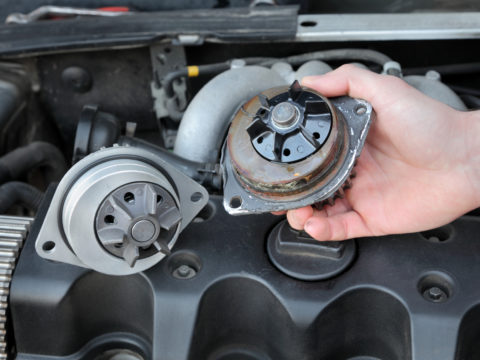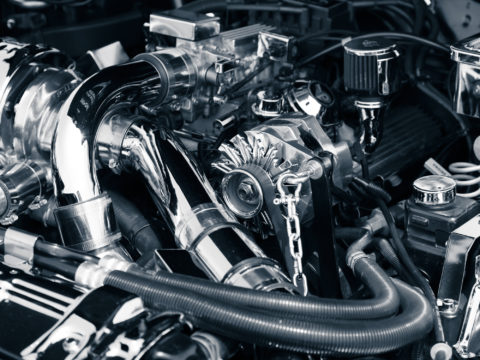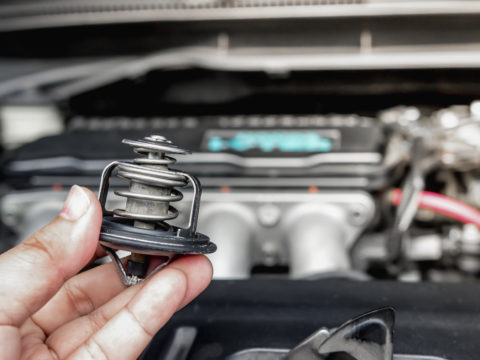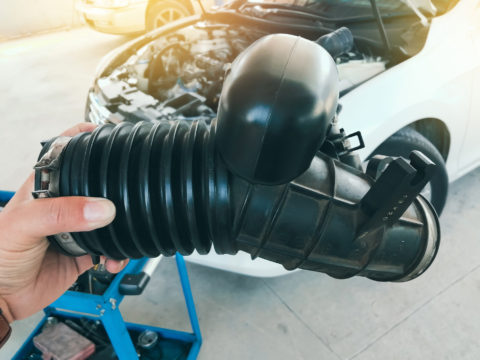If your vehicle has issues during operation or you begin to notice some problems, it could be the timing chain tensioner. Even if you are not a licensed mechanic, there are some simple ways to determine if this part is creating issues and will need replacing.
Contents
What Is a Timing Chain Tensioner In a Car?
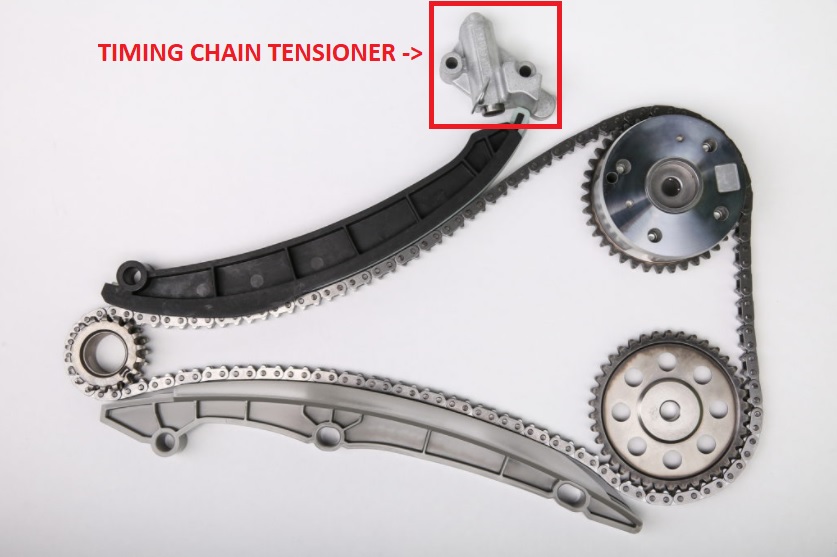
A timing chain tensioner is a critical component for your vehicle. This piece regulates the tension on the timing chain to help operate the water pump and alternator, minimizing chances of failure. Unfortunately, bad tensioners can cause many mechanical issues, and you can prevent them by replacing this part.
Where Is It Located?
The timing chain tensioner sits at the front of the engine in the cylinder block, just under a small round access plug that is removable without taking off the entire timing chain cover.
In some vehicles, the engine will sit facing the passenger side, so the timing chain tensioner will be there rather than facing the vehicle’s front.
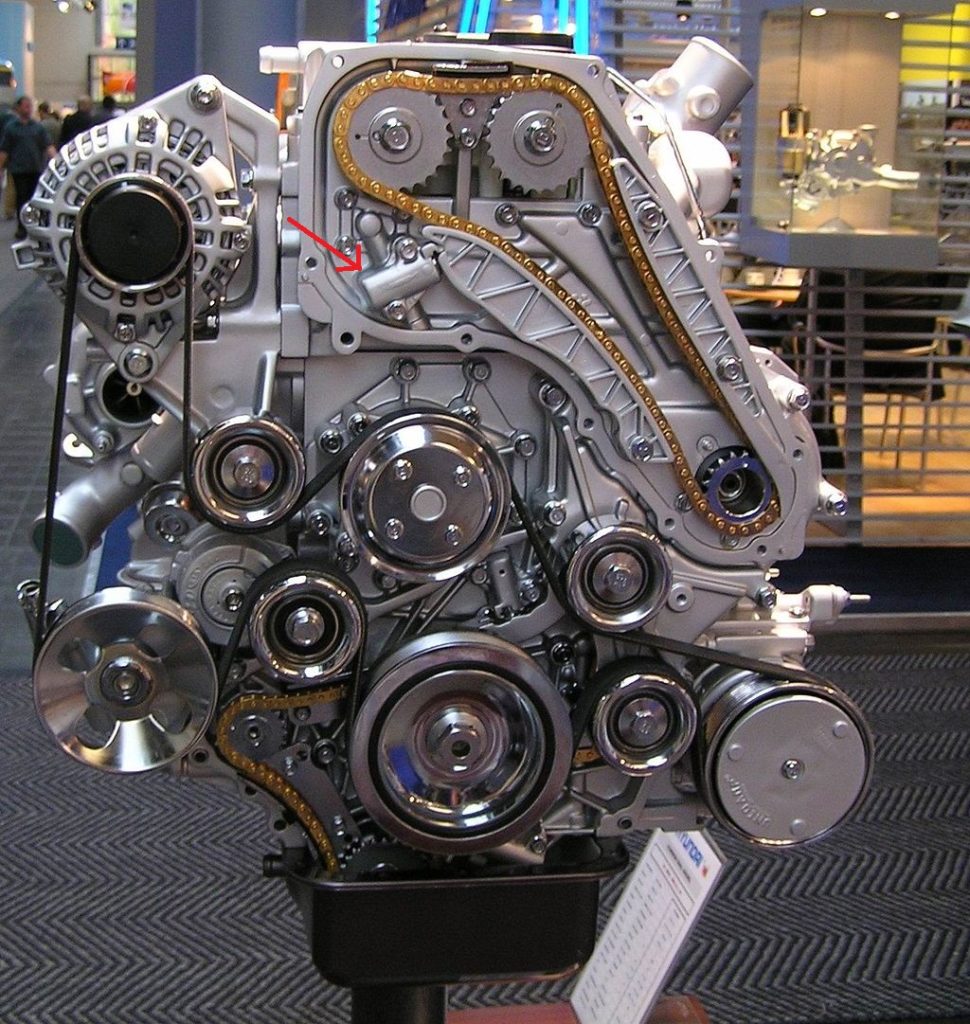
How Timing Chain Tensioner Works
The timing chain tensioner provides active tension on the timing chain by keeping it at the proper length. A tensioner can allow slack or tighten up if necessary, so the chain does not slip or move off the path and bang into the guides.
The tensioner can either contain a mechanical chain or use hydraulics to manage the spring for the correct tension of the timing chain. Over time, a spring can lose compression, making it more challenging to maintain the proper placement.
How To Check the Timing Chain Tensioner
It is simple to do yourself if you need to check the timing chain tensioner on your vehicle manually. First, open the hood and locate the front of the engine where the timing chain cover sits. Next, remove the cover to have a good view of the tension and the timing chain.
Here, you can visually inspect for any excessive slack in the chain and if the tensioner still has ample compression in the spring. If there is too much slack or the spring looks worn and does not hold tight, it will need replacing.
What Causes the Timing Chain Tensioner To Fail?
There are numerous causes to a timing chain tensioner failing. If you suspect you have a problem, examining these factors can help diagnose your issue.
a) Extreme Mileage
A tensioner will eventually wear out and fail with extensive use as it is a mechanical component. If you have extreme mileage on your vehicle and start seeing some symptoms we list below, it could be time for a replacement.
b) Loss of Spring Compression
The spring-loaded piece of the timing chain tensioner is the piece that helps keep the slack necessary so the chain will not slip off. If the spring is worn and does not hold compression, you will have some problems when driving your vehicle.
c) Infrequent Oil Changes or Wrong Oil Type Used
The timing chain assembly requires oil for lubrication during operation. If you do not change your oil on time or use the wrong type of oil for the engine, the timing chain assembly will not have a proper lubrication, causing mechanical failures to happen.
d) Guides Wearing Out
The entire assembly will contain guides to keep the chain in place. If the guides are wearing, the timing chain may start to skip or jump, creating stress on the tensioner and other areas of the engine. When guides are not doing their job, you will quickly see a failure in the timing chain tensioner or the entire assembly.
How Do You Know When the Timing Chain Needs To Be Replaced?
Because the timing chain connects the camshaft and the crankshaft, it is responsible for coordinating the engine’s intake and exhaust valves to open and close for smooth operation. If this part is loose or not functioning correctly, you may need to replace it.
Some possible symptoms that could point to a timing chain problem include:
- Engine power loss
- Starting problems
- Rattling metal noise from the engine
- Oil leaking or metal shavings in the oil
- Check Engine light active
- Uneven wear on the timing chain
a) Engine Power Loss
When intake and exhaust valves do not open and close correctly, the engine will not have the proper air to fuel mixture for optimal operation. In addition, bad timing chains can alter the coordination of these valves, essentially causing engine power loss.
This side effect can happen when accelerating or decelerating, or anytime during regular driving, and will progressively worsen if you do not remedy the situation.
b) Starting Problems
Starting a vehicle requires the engine to have the precise amount of air and fuel mixture to fire and turn over. When a timing chain is loose or failing, the engine may not receive the proper mix of air and fuel, creating starting problems.
It may take a few tries to get your vehicle started, or it may not start at all, depending on the condition of your timing chain.
c) Rattling Metal Noise From the Engine
If the timing chain is not at the proper tension, it can slip and move around, causing a rattling metal noise when the vehicle is operating. Alternatively, there may be squealing or squeaking noise, depending on the type of timing chair your automobile requires.
This isolated noise will be in the timing chain cover area, so popping open the hood and locating this region can help determine if this is the source of your engine noise.
d) Oil Leaking or Metal Shavings in the Oil
If a loose timing chain has prolonged issues banging around during the vehicle’s operation, it can wear a hole in the timing chain cover. In addition, holes may result in oil leaking from the engine, providing you with a visible symptom of a timing chain problem.
Alternatively, if there are apparent metal shavings in the oil, they may be coming from small pieces of the timing chain breaking off and falling into the oil pan. Again, this situation calls for you to see a professional mechanic as soon as possible before total failure.
e) Check Engine Light Active
The infamous Check Engine light can be the warning sign for various problems, including a failing timing chain. For example, if you have an active Check Engine light that provides a code such as P0008 or P0017, this indicates a timing chain or timing chain tensioner issue.
Unless you have a specific code reader unit at home, you will have to pay a visit to a certified mechanic to have them check the code and run a diagnostic on your vehicle to determine if the timing chain is the reason for the warning.
f) Uneven Wear on the Timing Chain
Uneven wear and tear on the timing chain is another symptom of a failing timing chain tensioner. If this part cannot hold the tension even during operation, the chain will wear more on one side, clearly determining the cause.
How Long Can You Drive with a Bad Timing Chain Tensioner?
If you know that your timing chain tensioner is failing and there is an issue with the timing chain assembly, driving the vehicle is not a good choice. The longer you wait to have this part replaced, the higher chance you have of the timing chain jumping off completely and causing severe engine damage.
You could end up with bent engine valves or damage the pistons, resulting in major engine repair or complete engine replacement.
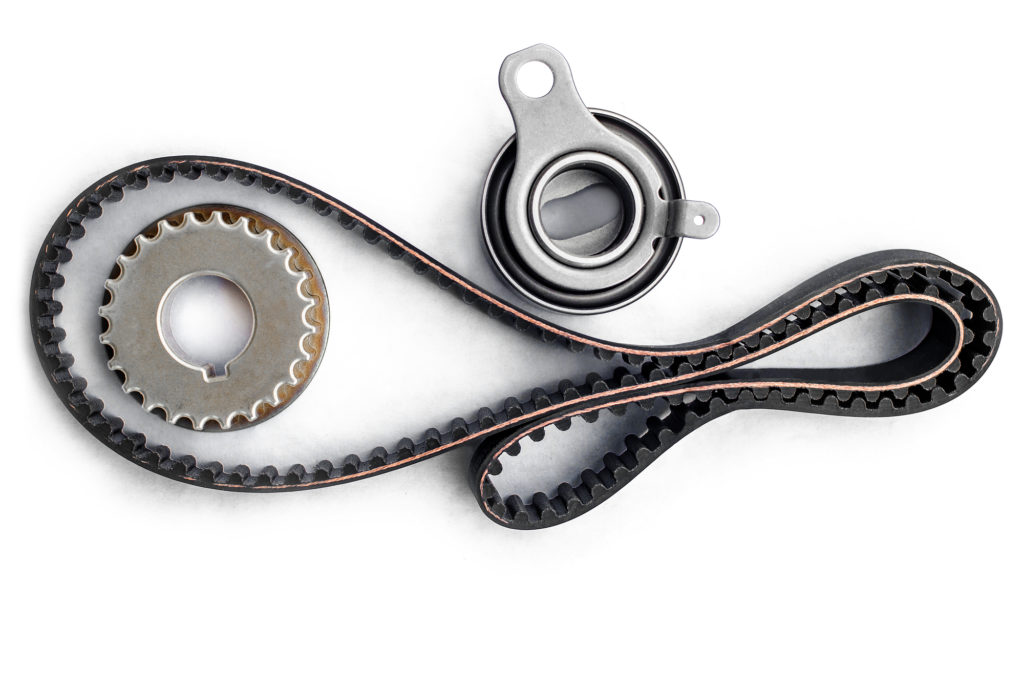
The Average Cost of Replacing a Timing Chain Tensioner?
The average cost of replacing a timing chain tensioner will vary significantly. So, naturally, the price to replace this critical component will highly depend on the year, make, and model of your vehicle.
You may have a repair bill of $1,000 or up to $1,500 or more to replace a timing chain tensioner on your vehicle.
Of course, if you perform the repair yourself, you can save money on labor costs, but this task will require you to have all the necessary tools on hand and the background knowledge of repairs.
Places You Can Buy the Timing Chain
If you want to purchase the part yourself, you can find a timing chain at many popular automotive parts centers or dealerships in your area. It is also possible to order the specific timing chain from the manufacturer if it needs replacing.
FAQs
i. How long does a timing chain tensioner last?
A timing chain tensioner should last between 80,000 and 120,000 miles. This time will also depend on if you follow proper care and maintenance of the vehicle. It may have premature failure without frequent oil changes or other maintenance tasks.
ii. Do you have to prime a timing chain tensioner?
Timing chain tensioners should have priming, especially if they are hydraulic models. If you do not prime them during the installation process, it may take some time to bleed out any air bubbles before they start to work correctly.
iii. How long does it take to replace a timing chain tensioner?
Because this critical piece of the engine requires careful attention during a replacement, it can take anywhere between six to eight hours to replace a timing chain tensioner and assembly. This time frame will be highly dependent on the make and model of the vehicle, of course.
iv. Can you reuse a timing chain tensioner?
It is not good practice to reuse a timing chain tensioner, especially if you have to replace a timing chain or other critical components. The best way to ensure smooth operation is to install a new timing chain assembly if one part needs replacing.

